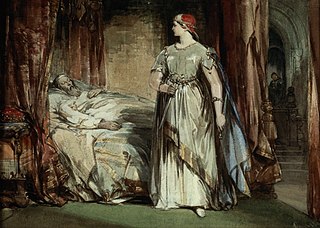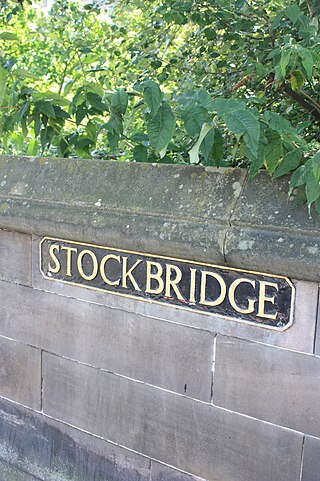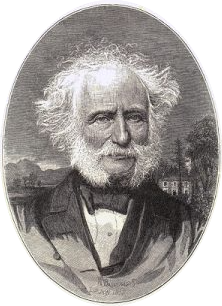

William Bonnar RSA (1800 - 27 January 1853) [1] was a Scottish portrait painter.


William Bonnar RSA (1800 - 27 January 1853) [1] was a Scottish portrait painter.
Bonnar was born in Edinburgh in 1800. His father was Thomas Bonnar a house-painter and interior designer of considerable skill. Bonnar showed an early aptitude for drawing, and was apprenticed to one of the leading decorators of the time. When George IV visited Edinburgh in 1822, Bonnar assisted David Roberts in decorating the Assembly Rooms for the grand state ball which was given in honour of the occasion. Shortly afterwards some signboards painted by him attracted the notice of Captain Basil Hall, who sought out and encouraged the young artist. In the year 1824 his picture of 'The Tinkers ' established him as a favourite with the public, and shortly after the formation of the Royal Scottish Academy in 1830 he was elected one of its members.
In 1833 his address is given as Robb's Court, off the Canongate [2] but by 1840 he was living at 113 Princes Street in a house looking over Princes Street Gardens to Edinburgh Castle. [3]
Bonnar died at Edinburgh in 1853 and is buried in St Cuthbert's Kirkyard in Edinburgh. His monument is almost identical to that of his father in Dean Cemetery who had died only a few years earlier, and is therefore presumed to be by David Watson Stevenson. Both his sister Elizabeth and his daughter Elizabeth are buried elsewhere in the graveyard, both in the Kemp grave. William's sister, Elizabeth Bonnar (1808-1889) married George Meikle Kemp. He named his daughter Elizabeth (1826-1879) after his sister.
He left behind him many fine pictures, several of which were engraved by his younger brother, Thomas Bonnar (1810-1873). [4]
Bonnar is often credited with overseeing the completion of the Scott Monument following the untimely death of his brother-in-law, George Meikle Kemp who had designed the monument and was overseeing its completion when he died in an accident. If true, William would be an odd choice, as one of the few non-architects in the family.

Bonnar has several works within the National Gallery of Scotland. [5]

The Dean Cemetery is a historically important Victorian cemetery north of the Dean Village, west of Edinburgh city centre, in Scotland. It lies between Queensferry Road and the Water of Leith, bounded on its east side by Dean Path and on its west by the Dean Gallery. A 20th-century extension lies detached from the main cemetery to the north of Ravelston Terrace. The main cemetery is accessible through the main gate on its east side, through a "grace and favour" access door from the grounds of Dean Gallery and from Ravelston Terrace. The modern extension is only accessible at the junction of Dean Path and Queensferry Road.

Thomas Phillips was a leading English portrait and subject painter. He painted many of the great men of the day including scientists, artists, writers, poets and explorers.
The year 1844 in architecture involved some significant architectural events and new buildings.

The Scott Monument is a Victorian Gothic monument to Scottish author Sir Walter Scott. It is the second-largest monument to a writer in the world after the José Martí monument in Havana. It stands in Princes Street Gardens in Edinburgh, opposite the former Jenners building on Princes Street and near Edinburgh Waverley Railway Station, which is named after Scott's Waverley novels.

Sir George Hayter was an English painter, specialising in portraits and large works involving in some cases several hundred individual portraits. Queen Victoria appreciated his merits and appointed Hayter her Principal Painter in Ordinary and also awarded him a Knighthood 1841.

George Cattermole was a British painter and illustrator, chiefly in watercolours. He was a friend of Charles Dickens and many other literary and artistic figures.

George Meikle Kemp was a self-taught Scottish architect who designed and built the Scott Monument in Edinburgh, Scotland. The poorly educated son of a shepherd, showing talents in woodworking as a child, he was apprenticed to a joiner and millwright.

Stockbridge is a district of Edinburgh, located north of the city centre, bounded by the New Town and by Comely Bank. The name is Scots stock brig from Anglic stocc brycg, meaning a timber bridge. Originally a small outlying village, it was incorporated into the City of Edinburgh in the 19th century. The current "Stock Bridge", built in 1801, is a stone structure spanning the Water of Leith. The painter Henry Raeburn (1756–1823) owned two adjoining estates, Deanhaugh and St Bernard's, which he developed with the assistance of the architect James Milne. Milne was also responsible for the fine St Bernard's Church (1823) in Saxe Coburg Street. Ann Street, designed by Raeburn and named after his wife, is a rare early example of a New Town street with private front gardens.

Horatio McCulloch, sometimes written MacCulloch or M'Culloch, was a Scottish landscape painter.

Sir William Boxall was an English painter and museum director.

Robert Scott Lauder was a Scottish artist who described himself as a "historical painter". He was one of the original members of the Royal Scottish Academy.

John Cochran or Cochrane was a Scottish portrait miniaturist, a stipple and line engraver and a painter of watercolours. Cochran exhibited his portraits at the Royal Academy between 1821 and 1823, and at the Suffolk Street Gallery from 1821 to 1827.

William Yellowlees was a Scottish painter. He came to Edinburgh in 1812, and studied there under William Shiels, the animal painter. He began practice as a portrait painter and soon became popular, winning the sobriquet of "the little Raeburn", partly by the small size, but more by the excellence of his work. He painted in Edinburgh for about fifteen years, and then moved to London, where he met with much success. Prince Albert was among his patrons. He contributed twenty portraits to the Royal Academy between 1829 and 1845. There is a portrait by him in the Scottish National Portrait Gallery. This self-portrait was identified by a descendant of William Yellowlees, Scottish psychiatrist and musician Alexander John Yellowlees, in the 1970s whilst attending medical school in Edinburgh.

Jacob Thompson was an English landscape painter.

John Hayter was an English portrait painter who was Painter-in-Ordinary to Queen Victoria, whom he first painted when she was 12 years old.
William Home Lizars was a Scottish painter, engraver and publisher.

Alexander Black was a Scottish architect, born in Edinburgh around 1790 who is mainly known for his association with George Heriot’s School, where he acted as Superintendent of Works for most of his active life.

Thomas Bonnar was a Scottish interior designer and architect of note, working in the Edinburgh area. He is particularly remembered for his outstanding ceilings.
![]() This article incorporates text from a publication now in the public domain : Bryan, Michael (1886). "Bonnar, William". In Graves, Robert Edmund (ed.). Bryan's Dictionary of Painters and Engravers (A–K). Vol. I (3rd ed.). London: George Bell & Sons.
This article incorporates text from a publication now in the public domain : Bryan, Michael (1886). "Bonnar, William". In Graves, Robert Edmund (ed.). Bryan's Dictionary of Painters and Engravers (A–K). Vol. I (3rd ed.). London: George Bell & Sons.